Bokashi Bins: the Whats, Hows and Whys
Inspired by watching Dive! last week, and thinking about reducing the food waste I send to landfill, I’ve decided to revisit the bokashi bin. We give most of our food scraps to our worm farm, but there are some things that worms just don’t like (onion skins and lemon peels, for example) and these end up in the rubbish bin.
When I attempted my first Zero Waste Week in June I used a Bokashi bin to process my food waste to avoid sending it to landfill. Having completed a full cycle with this system, I thought I’d explain what they are, how they work and how I found using one.
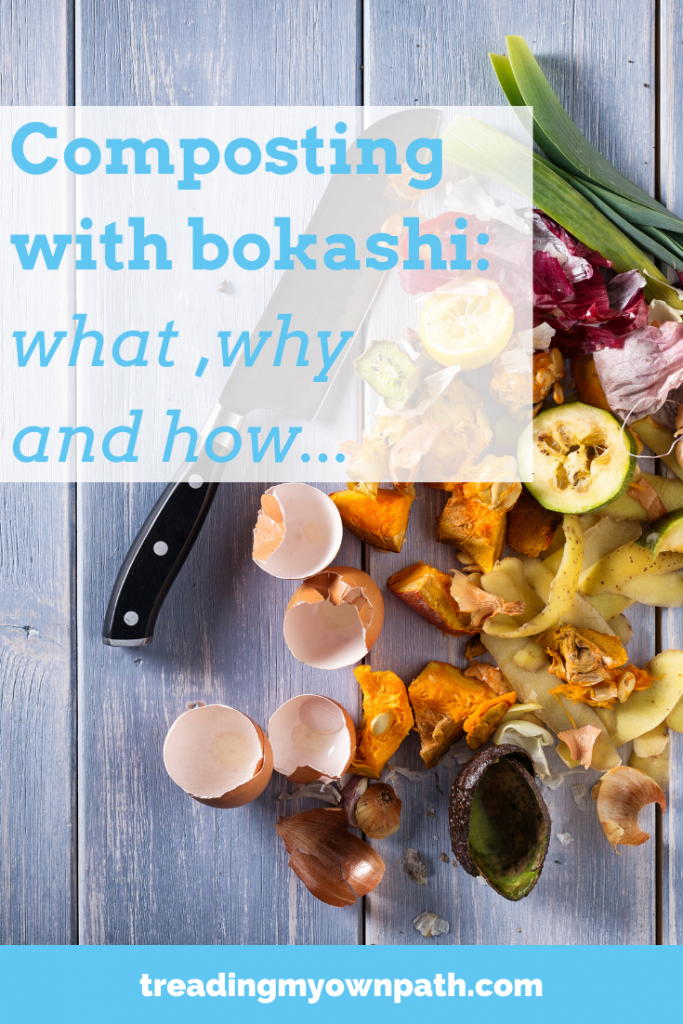
The Bokashi Bin: What Is It?
Bokashi bins are home composting systems that are designed to be used indoors. (Technically, they aren’t composting, but fermenting.)The bokashi system comprises two parts: a bucket with a sealable lid and a tap, and also bokashi mix, which are fermented grains (such as wheat bran and rice husks) that contain microorganisms. There is a tray inside the bucket to separate the liquid leachate that drains off with the sold waste.
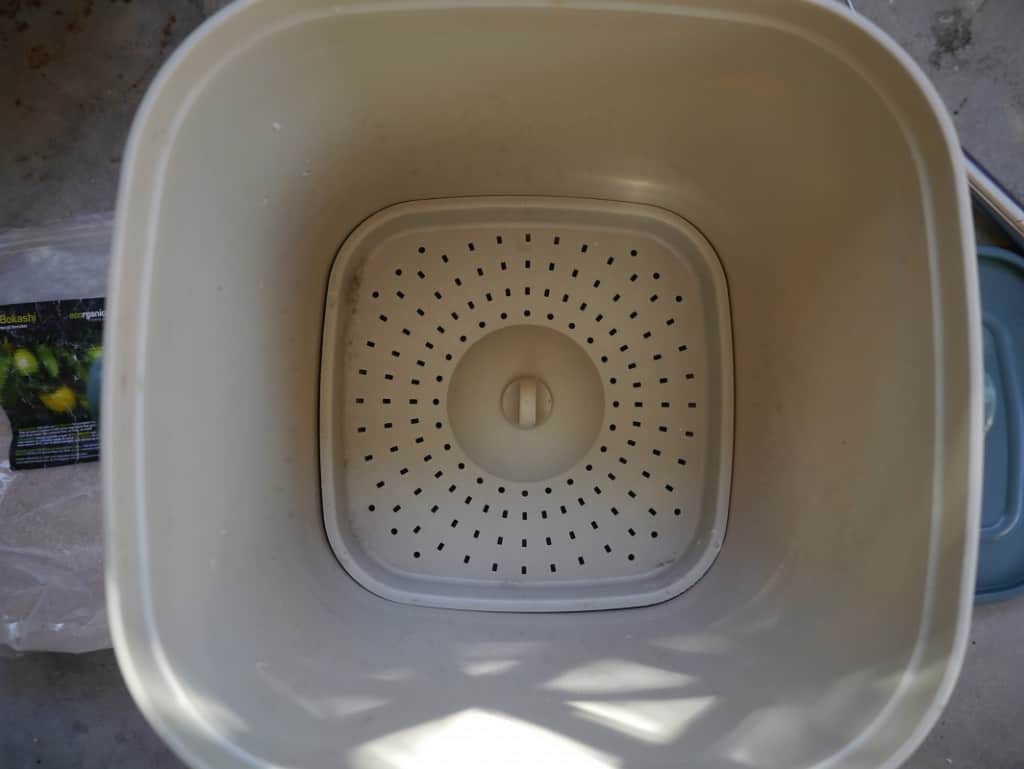
Removable tray inside the bokashi bin.
Bokashi Bins: How Do They Work?
Bokashi bins work by fermenting food, and need anaerobic conditions (no oxygen). The bokashi bin has a tightly fitting lid to seal the waste. (This differs from composting which requires oxygen). Food waste is placed in the bucket, the fermented grains are sprinkled on top, everything is compacted down and the lid is sealed. Because the food isn’t decomposing, there’s no terrible rotting food smell (although it’s not odourless), and it doesn’t attract pests. When the lid is on, there is no smell at all.
Bokashi bins have a tap on the bottom that allows the excess liquid to be drained off. A surprising volume of liquid is produced (how much exactly depends on the types of food you add to the bucket). Being very acidic, it’s not suitable to put on plants unless it’s heavily diluted, and even then it’s recommended that young roots are avoided as it will burn them. It does, however, make a great toilet and drain cleaner! No dilution is needed, you just pour it straight down.
Once the bin is full and the contents are fermented – usually after 4-6 weeks – the waste needs to be buried, or composted.
Bokashi Bins: Who Are They For?
Bokashi bins are touted as a great alternative for people who don’t have a garden and can’t compost their food waste. They are a fairly small and contained system suitable for indoors. They can deal with all types of food waste, including cooked food, meat bones, citrus peels/onion skins, egg shells and dairy – all things that you can’t put in compost or worm farms – so if you’re committed to zero waste, they are part of the solution.
The Bokashi Bin Review
I did not buy my bokashi bin – it was a gift from a friend who rescued it from a verge collection where it was destined for landfill. Conveniently, there was also a pack of bokashi grains with it. Bokashi bins are fairly easy to find second-hand, if you look in the right places!
I used my bokashi bin for citrus peel, onion skins, egg shells, corn on the cob waste, fruit stones and vegetable stems – things I can’t put in the worm farm. Because of the low water content of these things my bin filled up quite quickly: probably 4 weeks in total. Despite the low water content, I was surprised at how much leachate came off.
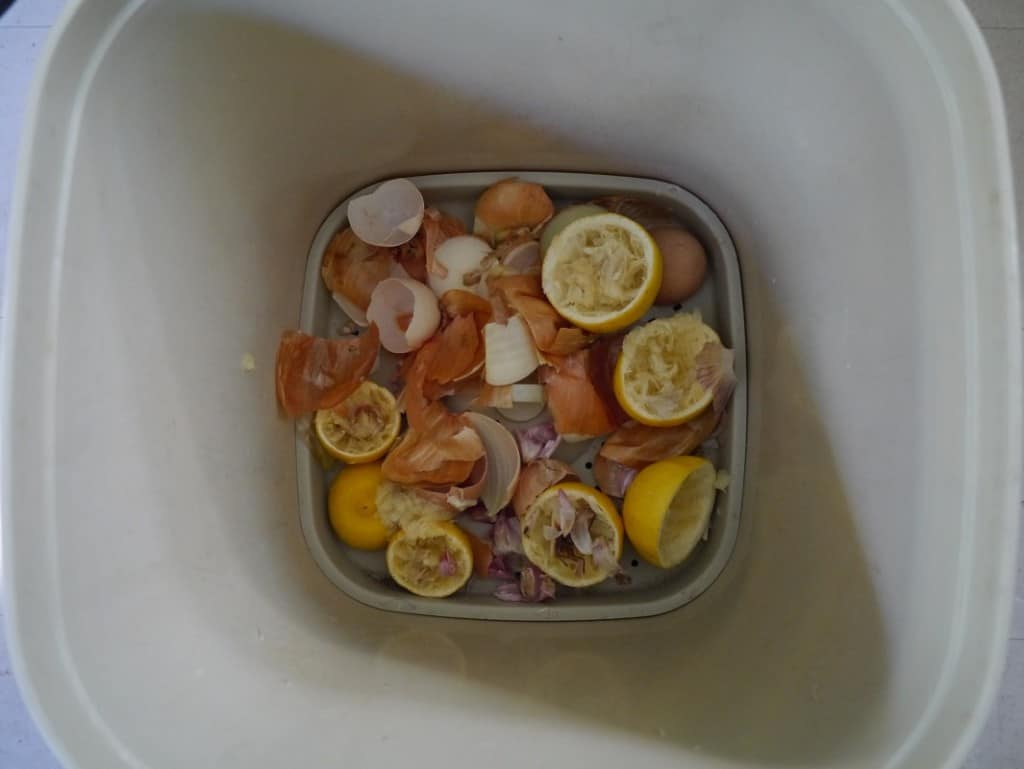
The start of my bokashi bin filling…
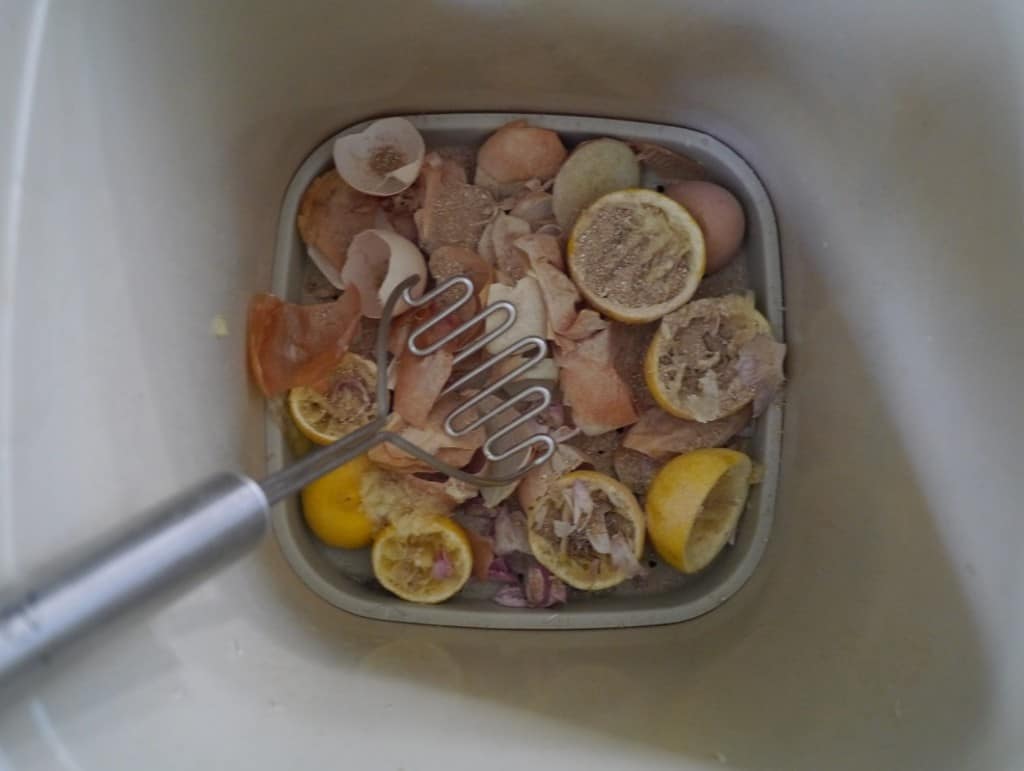
Each layer is covered with a sprinkling of grains, and then pressed down tightly.
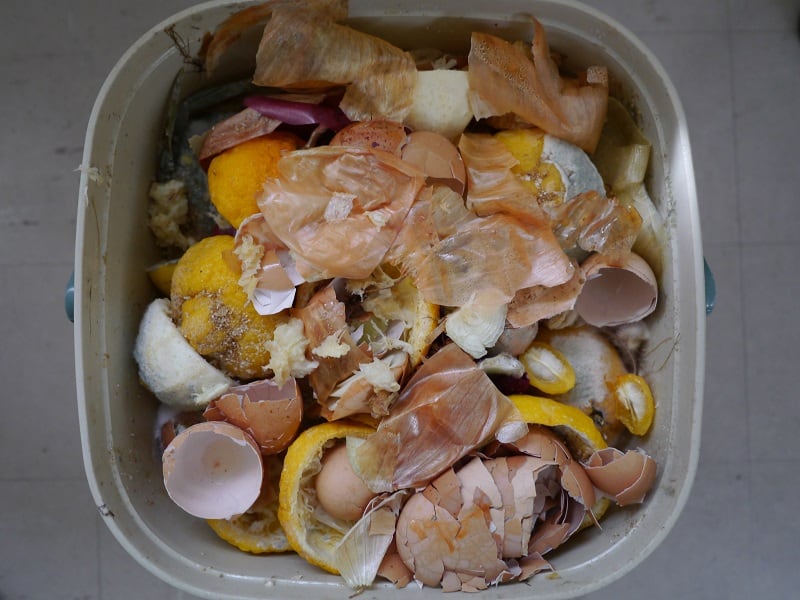
Filling the final layer of the bokashi 4 weeks later.
The smell of the bokashi didn’t bother me. When I opened the lid, it has a sour, fermented kinda smell (as you’d expect) that wasn’t unpleasant. I was quite impressed that with the lid on, there was no smell at all. The leachate smell, however, I could not bear by the end! It didn’t smell bad, just sour, but very strong, and I really didn’t like it.
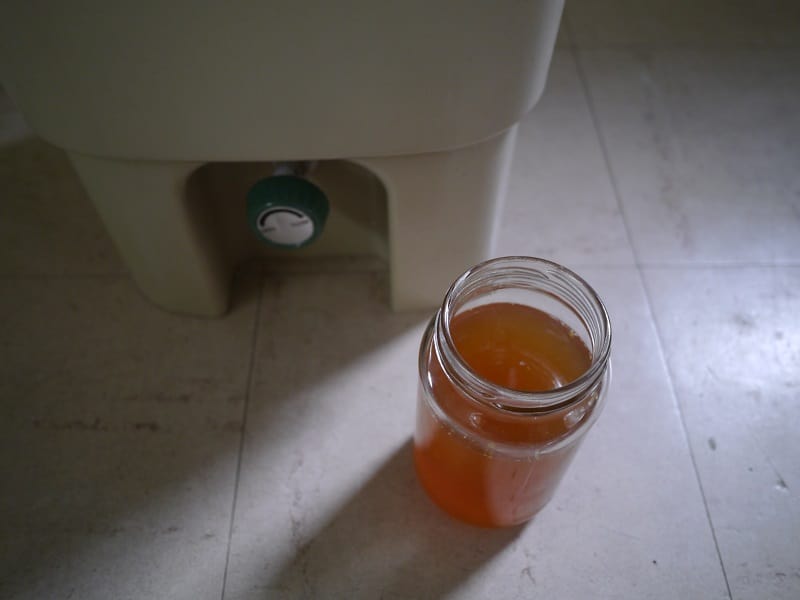
Bokashi bin leachate. It might look a bit like honey, but it most definitely does not smell like honey!
The frustration came when the bucket was full, and I had to empty it. The waste needs to be buried, so I found a corner of our communal garden to be the bokashi grave. The bucket was surprisingly heavy, and having to carry it down flights of stairs and across a car park was a pain, as was digging a big hole using only a trowel. (I’m sure a spade would have been easier, but bokashi bins are touted as solutions for people who live in apartments, and I’m sure most apartment dwellers with no garden don’t own a spade – I don’t). Fortunately the hole was big enough, so I emptied the fermented mass of waste into it and covered it over.
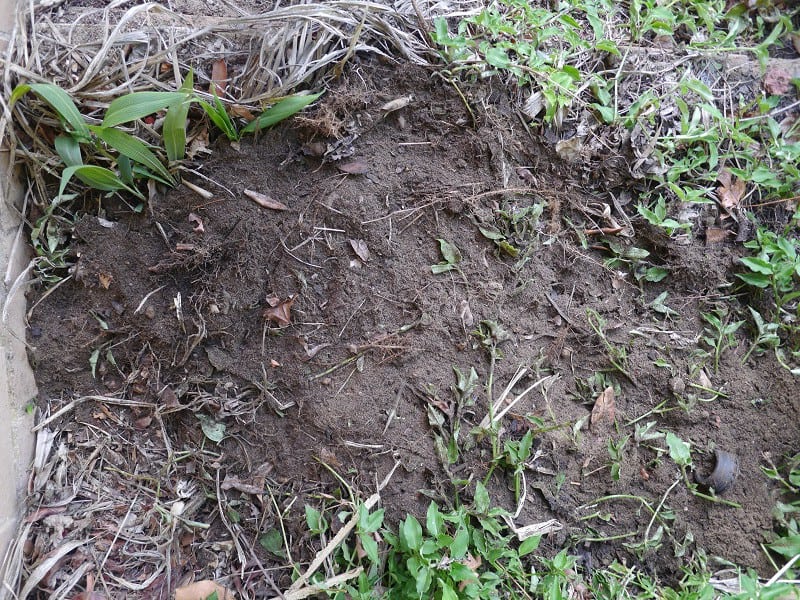
The bokashi waste final resting place.
I now understood why a lot of bokashi bins end up on the verge.
Should You Give Bokashi Bin Composting a Go?
I didn’t find the bokashi bin the most practical thing in the world, but I love that they provide a solution to disposing of food waste that can’t be composted or given to the worm farm.
However, you need to buy the fermented grain bokashi mix, which comes in a plastic bag and isn’t cheap. Having to buy the grains would be a deal-breaker for me. (If you’re dedicated, there are instructables out there for making your own.) Needing somewhere to put the waste when the bin is full – either a compost bin or digging it into the ground and burying it – makes it impractical for many people. Bokashi bins are often touted as alternatives for flat-dwellers who can’t compost, but that often means they don’t have land to bury the bokashi waste either.
Should you give it a go? Yes! I’m a great believer that you should try everything once! How else are you going to know if it’s for you? See if you can find a bin second-hand, or borrow one from a friend. Before you begin, just be clear on what you’re going to do with the fermented waste – you really don’t want it hanging around your kitchen for eternity.
Good luck!
I really want to hear you! Have you ever used a bokashi bin? How did you find it? Do you have any tips or ideas to share? If you haven;t used one, what’s putting you off? Please tell me your thought and ideas an leave a comment below!
[leadpages_leadbox leadbox_id=1429a0746639c5] [/leadpages_leadbox]
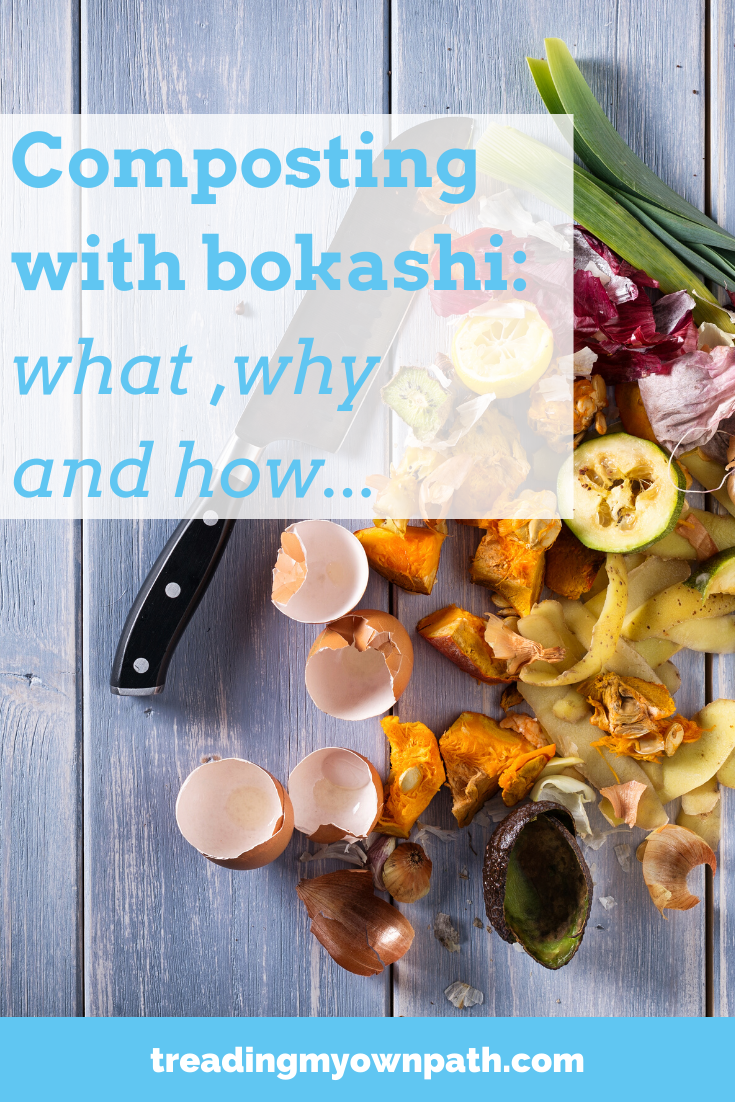

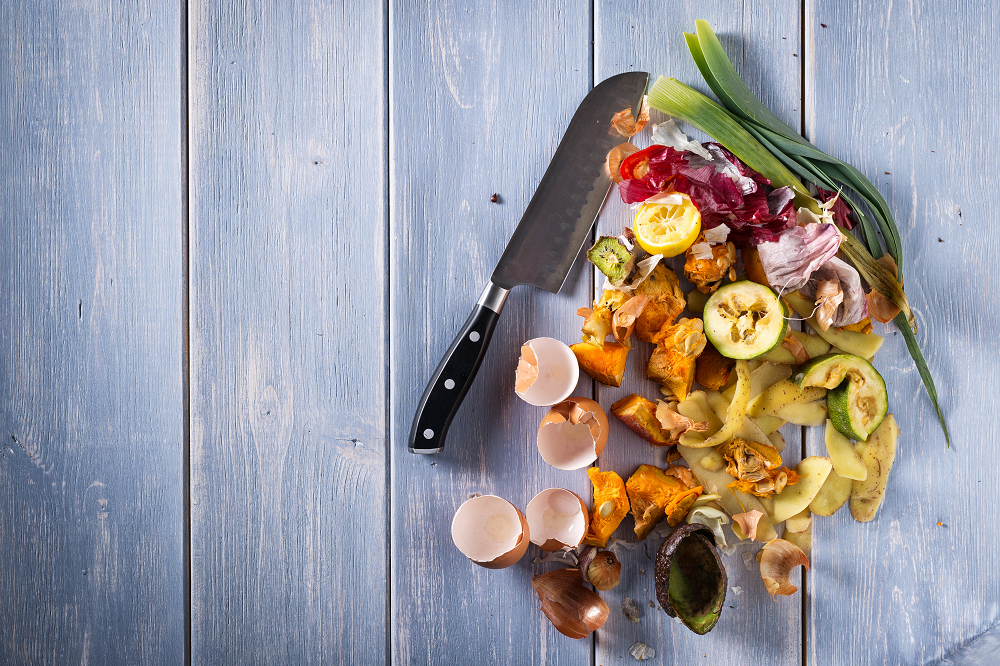
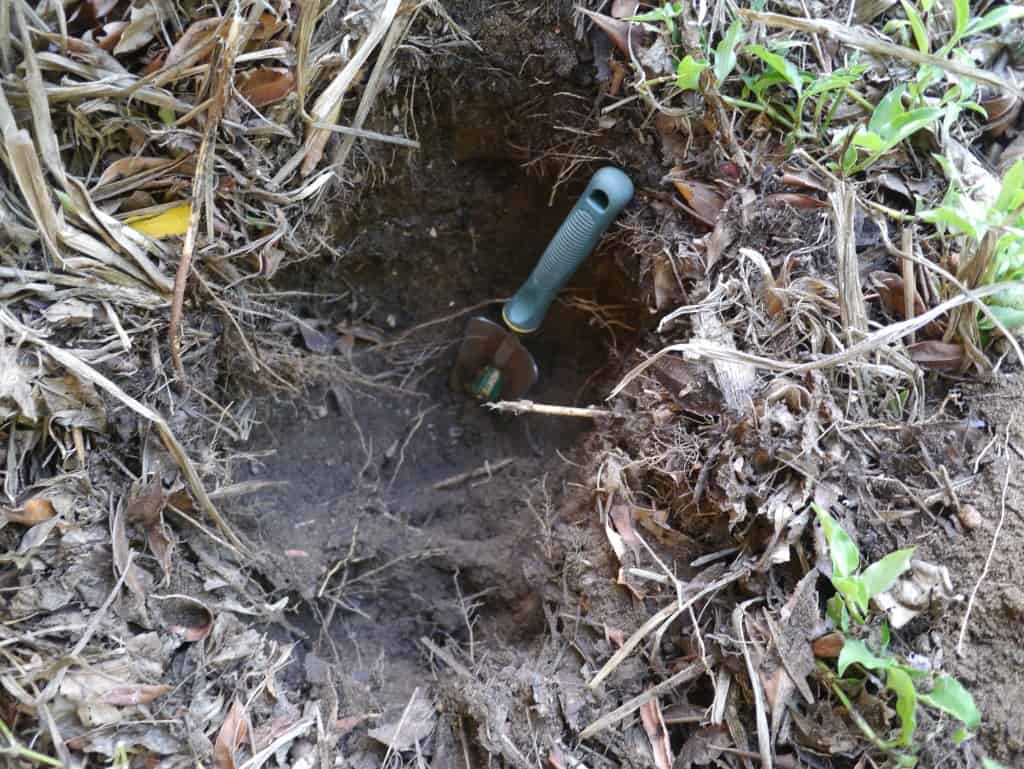
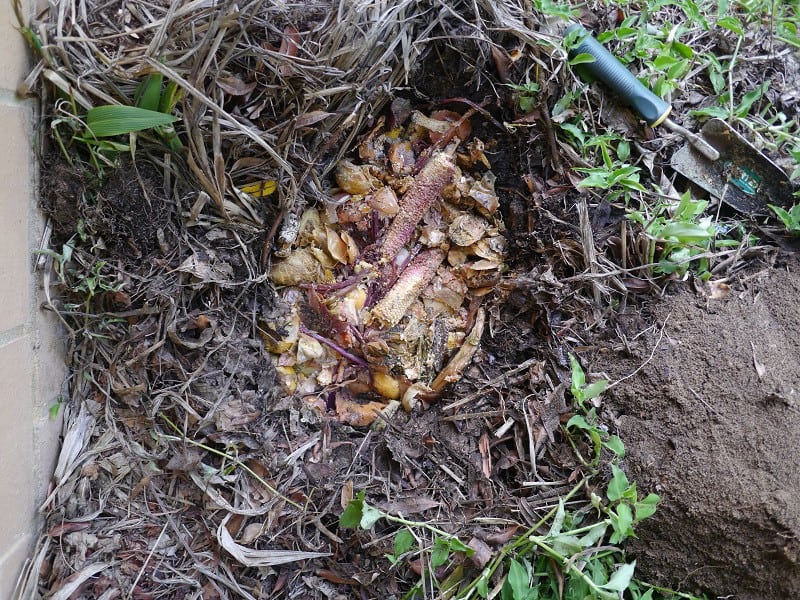




We have two bokashis so that when one is full you can leave fermenting while you fill the second one. We empty into compost bin, don’t dig into ground. We like them and buy the grains, but have been told you can also use sourdough starter; not sure if that’s true.
Lots of people who use bokashi bins seem to have a two-bin system, I think it would make it a lot more practical. I’m sure I can find another one on the verge! I would prefer to compost the waste, far less effort (!).
Oooh, I have a sourdough starter! I read that the bokashi grains have yeast and two bacterial strains, one of which is a purple non-sulphur bacteia that I really hope is not in my sourdough starter! – but that doesn’t mean it won’t work without it. I’ll have to give it a try!
I do small-scale composting on my balcony using plant pots. A bit soil, some vegetable matter. And then it got maggots in it. I thought I was doing so well… I might see how it is doing, maybe I’ll take it up again.
Haven’t tried bokashi because of the you need dig it in the ground thing, with pots it’s at least usable as a growing medium after a while.
Some of my readers recommended that to me a while back. Also, putting the bokashi waste in a pot rather than burying it in the garden. It should break down, and then be fine for planting, although it’d take a while I suspect..
To be honest I’m a bit scared of having a stinky mess right outside my front door…but it would certainly be easier than trying to dig a whole every few weeks. The other thing I need is big pots. Still, we have a verge collection coming up…
Like Eugenie, I’m a big fan of bokashi. We work with two bins and let it ferment for 2 weeks or so after filling it before decanting it in the compost bin. It turbo charges our compost. It acts both as an enricher and accelerator and allows us to get at least two harvests of compost from our bins. I’m an absolute fan. I know some people complain about the cost of the bran but we find it actually lasts double the number of months the retailers recommend.
The smell I guess is not pleasant but if it smells like ‘bile’, you know the anaerobic digestion is working.
That’s what I need, a system! And probably a compost bin. The burying part was so traumatic that I haven’t been able to face giving it another go until now! still, I do now how a compost bin, just need to vermin-proof it and dig it in.
Have you ever tried making the grains? What do you use the leachate for?
I suspect vermin proofing is a bigger deal in Australia than a London garden ;-) I just regularly fork it over to discourage rats. Plus they HATE bokashi!
I’ve not gone too trouble of making my own bran. I don’t have the space to store the ingredients and for the amount we use the bought bran does not work out expensive. I really do think retailers overestimate the amount you need. Either that or it is based on people generating too much food waste.
I use the leachate as drain cleaner and occasionally plant feed – diluted mind.
Rats seem to be a bigger problem in Perth than the UK, yes. Even in the city!
I used less than was recommended – I never trust portion sizes recommended by packets!
Do you find the smell off-putting?! (Of the leachate I mean)
I’m grateful for my bokashi bin as I can’t have a worm farm or compost bin at the moment. My experience has been similar to yours, but I think because my only other option is to landfill our scraps I’m committed to making it work ;) I can’t remember if ive told you before that I found our local community garden has compost bins I can add my bokashi contents to. I dont have a plot yet (3 year waiting list) but they give access to composting bins in their communal area.
Someone else’s compost bins…that’s a good solution! I’m impressed by your commitment…I’m going to have to give it another go!
Can you still get involved with the community beds at your community garden or do you have to wait until you have your own plot? Most of the ones near us seem to have a good community focus as well as the individual beds.
You could also check out sharewaste.com where you can match up with people who are willing to receive your foodscraps for their compost or chickens, etc. I just came across it, it’s volunteer-run and free. Pretty cool!
LIndsay, first I’ve been thinking about you and wondering if you have been affected by the cyclone, are you safe?
As for the bokashi bin, I haven’t tried one. I was put off by the need to buy the bran. My solution has been to make up my own form of composting. I simply keep one garden area open, without plants, that I fill with my compost. I turn it often with a hoe and in now time the foods break down making wonderful compost. For the winter months I use my chest freezer to store my food scraps which also helps to offset the dead air space as I eat my way through the foods I put up. In the spring I carry the frozen scraps to the garden and bury them. The frozen scraps break down even faster than fresh scraps which means I have plenty of room to keep adding scraps through the summer months.
I did not know you had to bury the bokashi, for some reason I thought it broke down into compost, duh. Having to carry out a heavy bucket is a deal breaker for me as I don’t have anyone I could ask to help me on a regular basis.
Hi Lois, yes thanks, the cyclone was the other side of the country so very far from me. I’ve been on holidays hence the lack of contact!
The bran-buying is something I need to investigate- or the bran-making should I say!
I freeze scraps sometimes for the worms- if I have too many of if they need help breaking down. Making it a regular habit is a good idea for keeping the freezer full and reducing energy. Something to add to the list!
You can compost bokashi once it’s fermented, but yes it’s a many-step process. I’m really not surprised it hasn’t caught on. We are more willing than most to go the extra steps but this pushes my patience / tolerance to the limit!
It’s good to hear you weren’t affected by the cyclone. I have been hearing quite a bit about the bokashi but I still think this is one I will pass on.
I don’t really see the benefit of a bokashi bin… It would be great if it would convert food waste into compost. We could use that for our indoor garden. But from your story above it seems the waste still needs to be composted after the bokashi bin…
In our town the food waste (peels etcetera) is collected by the municipality. We simply collect the food waste and once the compostable bag is filled, we drop it into one of the municipal containers in our street. I must admit that I have not looked up what exactly is done to the food waste afterwards, but considering it is collected separately, I assume it is composted.
Because I don’t like the idea of transporting waste, I would love to have our own compost pile. However, from my understanding it takes quite a long time for food waste to biodegrade into compost (one year, two years?). We decided to not built our own compost facility in our backyard, because we are not sure whether we will still live in the same house next year.
The main advantage is that it breaks down all the things that can’t usually go in the compost – cooked food, bones, meat, fish and dairy, etc. So if you want to be completely zero waste and aren’t vegan, then it’s great. Personally I think I’d find it easier to be vegan than regularly use a bokashi bin! Yes, you have to further break down / compost the waste once it’s fermented.
Composting doesn’t take 1-2years if you know what you’re doing, it can take 6 weeks, maybe less. Not that I know what I’m doing (!) but I know plenty of compost experts who run workshops so I’ve picked up a bit. If you balance the carbon and nitrogen, and aerate it properly you can break it down pretty quick. Those plastic bins work pretty well as they keep it warm (you can usually pick up second hand ones). You should look into it! ; )
This sounds interesting indeed! Thank you! Yes, I will look into it. Compost within two months, that sounds great!
Im vegan but my cats are not. Leftover cat food with fish, chicken, and beef goes right into the Bokashi bucket when these ingredients are inappropriate for a traditional compost bin.
Thank you for the in depth coverage of your experience with the bokashi bin!
Thanks Rachel – you make me sound like some cutting-edge reporter! ; )
I love this idea! You can’t compost everything so this is a great way to have minimal waste, and clean toilets! Awesome, thanks for sharing this neat tip!
Thanks Christy! Bokashi bins are great for all the non-compostable things : )
I’m so glad I read this. Some recommended one to me that I intended to get once I moved, but we will be living on the 30th floor of a high in a major downtown area, so I have no idea where I would take it! I am car-free, so I would have to rent a zip car just to get somewhere that I could actually bury it. Thanks for the review!
Personally, I don’t think bokashi bins and hi-rise flats are a good combination at all! I’m glad I saved you hauling it down all those flights of steps : )
Lindsay, thanx for your review on Bokashi Bin method for creating compost rich soil… I agree-if you are an apartment dweller best to start a local Council campaign for them to have a worm farm and therefore collect ppls scraps (Lismore City Council the nth coast of NSW…) or create a composting business at the tip—
Personally I am a BIG fan of them–I love that the ferment bran stops odours & ponks in the kitchen, & that juice is like fertiliser basically-needs dilution!! Yep-its smells gross but not if it’s used on plants indoors (or outside!) surprisingly..
Timeframe on that sludge, once it IS in the ground is x2 weeks & then you can plant straight into it–So, if you have a vege plot you can just begin at one end thats your resting of fallow end & enrich & plant away…
We as a vegetarian Fam (7members at points) were so enthused that we had x2 outdoor 44gallon drums that we filled and rotated..Saved the whole vermin in the country issue etc…& no smell…
We also purchased a drum of the grain & was more econo & lasted forevs…
All the best everyone..
Woah…sounds like you got this thing down perfectly! I didn’t think to look for the bran in a drum rather than the plastic bags they always seem to come in – at least the container could be repurposed afterwards. I have been given a recipe by a friend to make my own ferment but I think I need to get a bit more used to the bokashi bin first so I can tell if it’s actually working!
Your ethusiasm is infectious! : )
I thought the less you have in your fridge and freezer the better because the air can move freely and finds less things to work the engine on cooling. Is it better to have your stand up freezer/frige over half full or under half full?
Well I always thought this too Mel, but then I went to a talk about energy efficiency and the guy got super animated saying this was a myth and how much stuff is in there makes no difference. I wish I could remember why now, he started to go into the physics but then I lost the train of thought. So I’m not sure!
My understanding is that how full a fridge is doesn’t make too much difference, but there is a power shortage an emptier fridge will warm more quickly than a fully stocked fridge.
With a freezer, if you intend to open it to take things out and put things in, then it is more efficient to have it full.
I started bokashi this year and found, the more bokashi bran you use the less smell you will have.
Aha, that’s probably true Dudley! The bran I had was also found on the side of the road, and was past its expiry – I’m sure fresher works better too! : )
I use a Bokashi spray in a bottle, not the bran, and spray generously each time I add food scraps to the bin. The bin just smells of ‘cider vinegar’ when it is opened. I have a garden but am not up to digging holes, so I bury the fermented waste in soil, in a large plastic tote box, with a lid to stop critters digging up any waste. Then I use that in container gardens and raised beds. The worst part is emptying and then cleaning the bucket! But it makes great compost and fertiliser.
Wow, i did not know that Bokashi spray was a “thing” – thanks for the tip Cecilia! Do you make it or do you buy it?
And yes I agree, that is definitely the worst part! That’s the bit that separates those of us that are dedicated to reducing our waste to those who are not – if anything is going to change your mind, that will! ; ) Our original bokashi bin was stolen (!) so I got another from Gumtree and I’m pretty sure it had chicken manure in it prior. With minimal cleaning. Goodness it was pungent!
Thanks for sharing about your system – could you say more about how you deal with the fermented waste? I’d love to hear.
Hello, I have used my bokashi bin for the first time a few days ago. Today I wanted to add my next lot of scraps and its full of maggots. I am assuming its contaminated and must be tossed?
So, my question is how do I keep the food scraps “fresh” till I have enough to add to the bin. Only 2 adults in our house and we don’t generate enough waste to be able to fill small container more regularly than every week. Can I freeze the waste and then add it to the bin frozen or defrost first and then add it??? Feeling a bit bummed as I really want to go zero landfill!
Thanks
Mandi
Hi Mandi, it seems a shame you haven’t had a reply since April! If you haven’t already found a solution, (and I hope it wasn’t “giving up” ), just have a container (we use a 2l ice cream tub) on the kitchen bench to collect food scrap for the day. At the end of the day, empty that container of scraps into your bokashi bin, put the required amount of bokashi bran and push everything down compactly, close the lid tight and walk away. Rinse out your kitchen bench container to be ready for use the next day. It doesn’t matter that you didn’t fill up the container each day , just empty into the bokashi bin at the end of each day. Unless your scrap consists of only two apple cores a day, I don’t think it matters if you didn’t fill up your container.
Hi Michelle, thanks so much for replying and I’m so sorry Mandi that I somehow missed this! I keep my bokashi in the kitchen and just add as I go. If you have space in the freezer you could put things in there in the short term (I do that sometimes with my worm farm). But yes, I agree with Michelle – keep everything sealed and add as you go! : )
We 4 members including a kid stay in apartment. I have three bins which is 14 ltr each. I recently started using this. Bins get full in a week if not pressed tightly else 10-12 days. As you have mentioned the pickle smell is very strong and my family members are not liking it, though I have less issue.
After two weeks I emptied the bin to another big bin with cocopeat in between small layers. But then it started smelling really bad like real rotten waste. Two time I discarded the same as worms came in it. My aim to make good compost hence didn’t succeed. Now I am in the verge of almost giving up.
Hi Vinitha! I think bokashi bins are great, but in conjunction with something else. I think they can’t handle the amounts of waste we produce on their own. I would say, I think 10-12 days isn’t really long enough for the fermentation to get going. If you can, I’d leave the full ones for a few weeks before emptying.
I recommend starting a worm farm for the veggie scraps. They don’t smell, are much more fun and take up the same amount of space. If you don’t have a balcony you can keep indoors. You can give the worm castings (the composted product) away if you don’t have use for it. Here’s a DIY if you’re keen to try it out: https://treadingmyownpath.com/2013/04/04/diy-worm-farm/
We just compost food waste. People who don’t want to compost it themselves can have it collected by the council as part of the weekly waste collection. Then it goes to compost. I’m at a loss as to why anyone would send it to landfill – I thought all councils offered this service. I’m in the UK.
It’s a common service in the UK Susie but sadly not here in Western Australia. A couple of councils are trialling it as I write this, but most just landfill it. Crazy I know!
I am looking into ways to dispose of my food waste. I like the idea of the bokashi but there are currently four adults and two babies in my house and we produce a lot of food waste. I was thinking of having a bokashi inside for things I can’t compost (meat fish and dairy?) And then having something outside for veggie scraps. Would a worm farm be OK for all the veggie scraps and will they take bread too? Can the bokashi not go into the worm farm once fermented? This is so much more complex than I initially thought!
Hi Nicci! Compost is the easiest for dealing with large volumes; or I’d recommend a Hungry Bin worm farm for large volumes (they are expensive initially but last 25 years). Bokashi for meat/fish/dairy, but you can add this to the compost once full as the fermentation will kick-start the breaking down. Once you’ve got a system you won’t think it’s complex, you’ll think it is super simple I promise!
Nicci, I have a worm bin as well as two Bokashi bins. I recently added some of my bokashi content into a corner of my worm bin. By day 3, the worms started eating it. They LOVE it! I started doing Bokashi compost because my worms couldn’t keep up with the kitchen waste and I really rather not throw food in bins. The Bokashi system solved my problem. As for people who don’t have a garden or worm bin, I would suggest to ask around or even post on social media. Anyone who has a garden should welcome bokashi waste as it is super nutritious for soil. Free compost!
,I had a worm farm living in a house but now I am in a unit and recently bought a Bokashi bin but did not realise I would need to bury the waste, I do not have a car, I do not have anyone who wants it buried in their garden, the local council has so few community gardens and our council picks up green waste but not food waste, I have a large empty plant pot on my balcony, could I put the waste in that and cover with a thick layer of potting mix. Otherwise I will have to stop using the Bokashi bin, something I prefer not to do
A friend of mine did exactly that, Kate! You could also look up Sharewaste.com and see if anyone near you is happy for you to drop off your bokashi to add to their compost – I know someone near us does this!
Such a great conversation, thanks to all involved. I’m in Perth as well. We signed up at Sharewaste.com to receive other people’s food scraps. We have up to 5 households dropping off food scraps for us. We love it.
Sharewaste is the best site ever, I recommend it to everyone! We have heaps of neighbours using our communal compost bins too, love it!
You can feed bokashi to your worms after it sits for two weeks in limited quantities, about a half litter in a corner will be gone in a week.
I mulch heavily around my trees and I put my bokashi under the mulch. It is gone within a few weeks. Have been doing this for years. I also use the bokashi liquor 1 cup diluted in 5 gallons water as a foliage food. I have gotten rid of curly leaf on peaches and nectarines by removing the affected leaves when they appear and spraying the liquor mixture on branches and leaves and putting the bokashi under mulch around the trees. It has worked for three crops.
I am using a Bokashi bin for the first time. It has been filling for about two weeks and is two thirds full. I use the spray. I intend to put it in a plastic storage box with some soil and a lid when it is time to empty it, leave it for a few weeks and then put the compost in the garden when it is broken down. Does anyone know whether this is ok or is it better to put it in a compostor that can be rotated? I don’t want to dig holes and put the fermented stuff in the garden straight away because the brush turkeys will dig it up! I am in Queensland Australia by the way.
This all sounds good to me! It might break down more quickly in a rotatory composter, but it definitely isn’t a make-or-break thing, so do what is easiest for you! :)
Thank you so much for this clear guide! A Bokashi bucket has just joined our household and I am pleased to see that I can add citrus waste. Happy fermenting!
Hurrah! Same to you :)
You actually can feed your worms onion peels and citrus, just have to process it with other worm friendly items. Grind them up in a processor and add them to other ground up items and you’ll be fine.
The Bokashi system, although a good “attempt” at waste reduction is no more efficient than just taking your food waste and burying it. No need to spend $$$ on bran and buckets. If you want real efficiency (and fun!) invest in some vermicomposting options. It’s been and always will be the better option for composting household food scraps.
Hi Vince! The bokashi system is not designed for efficiency so much as making certain food waste suitable for burying or composting. There is no way you can add raw meat, cooked food etc to a compost or a hole in the ground in an urban area without attracting dogs, cats, rats, cockroaches etc. The fermenting process helps make it less palatable, and means it can then be composted .It is a great systems for meat-eaters and inner city dwellers.
You can buy spigots for buckets at Lowes or Home depot (or similar stores)They are usually sold to make rain barrels
Great tip, thanks Violet!
I have cockroaches in my bakashi binI don’t see them inside my home and my B bucket is just outside my back door..I’m surprised they are in there because it’s closed.i have tried to compost but had a problem with rats, I thought my compost bin was working really well but I was just growing really healthy rats! Any suggestions ?
A bokashi bin should be completely sealed and airtight Karyn so that shouldn’t be possible. I’d check the seal is tight and the tap is closed. As for rats, if you dig the compost bin into the ground and use mouse mesh they shouldn’t get in. Or a rotary composter will stop them – that is sealed up also. Hope that helps!
I just found a post of Pinterest showing how the Bokassa bin contents can be turned into soil using a big plastic storage tub. A soil factory! Just add garden soil and / or potting mix, stir well and cover! It’s quite amazing and no need to dig. I’m going to create a compost bay in my garden and just like the soil on top of the Bokashi bin contents to avoid composting. I think this will avoid the need to dig. I love the Bokashi because everything goes in there and it’s the one stop shop.
I love my Bokashi because its almost hubby proof. He doesn’t have to sort waste out – ie meat, dairy etc. It all goes in. Lid on. No smell, and no flies. Secondly I use a double bin system so from starting first bin to having to bury it it’s 2 months fermented. I bury mine in a wormery. They go crazy for the stuff. The worms are eating 25% – 50% more as its easier for them to digest. I ignore all the suggestions not to put tea bags in, but I do add extra bran if I am adding too much in at any time. I get far more in my bins if I chop it up in a food processor first which I do with tough outer cabbage leaves, root veg peelings etc. You can see some of the videos on https://facebook.com/wormfarmspain.
We strive for zero food waste so between us, dogs, cats, chickens and worms we are nearly there.
Hi, not sure on how exactly you can add the bin contents into your compost bin? Your photo of the contents being buried still had obvious bones and citrus peel visible which are no no’s for compost bins? Am I missing something here?
I have had excellent results with bokashi in my garden in the States. There are incredible differences between veggies that I have seeded over bokashi vs the ones that were not (especially the greens). The only issue I have found is, after burying the bokashi in my beds, I have to keep it protected (I use hardware cloth weighted down with some odds and ends) for a couple of weeks to keep the opossums and raccoons from digging it up.
Hi LIndsay. I started out with just one bokashi (which I bought) but found it needs another 3 weeks in the bucket before digging into the garden so I started a second one. This one was just a bucket with a lid. I put paper scraps in it which soaked up the juice so this is working just fine. Down the track I will make my own bokashi mix but not for now. I love it. I dug in the first bokashi in an unused garden bed and planted a globe artichoke next to it. I separated the globe artichoke in two and planted the other one in the ground same soil same compost. But the one with the bokashi is more than double the size now so Ive planted the next bokashi ferment next to the second globe artichoke in the ground… to await my experiment and see if this second globe artichoke now takes off and grows as big as the first one!!! My bet is that it does. So I love the bokashi system but I also compost and will do vermicomposting down the track too ! Love the blog, Kristine in Perth